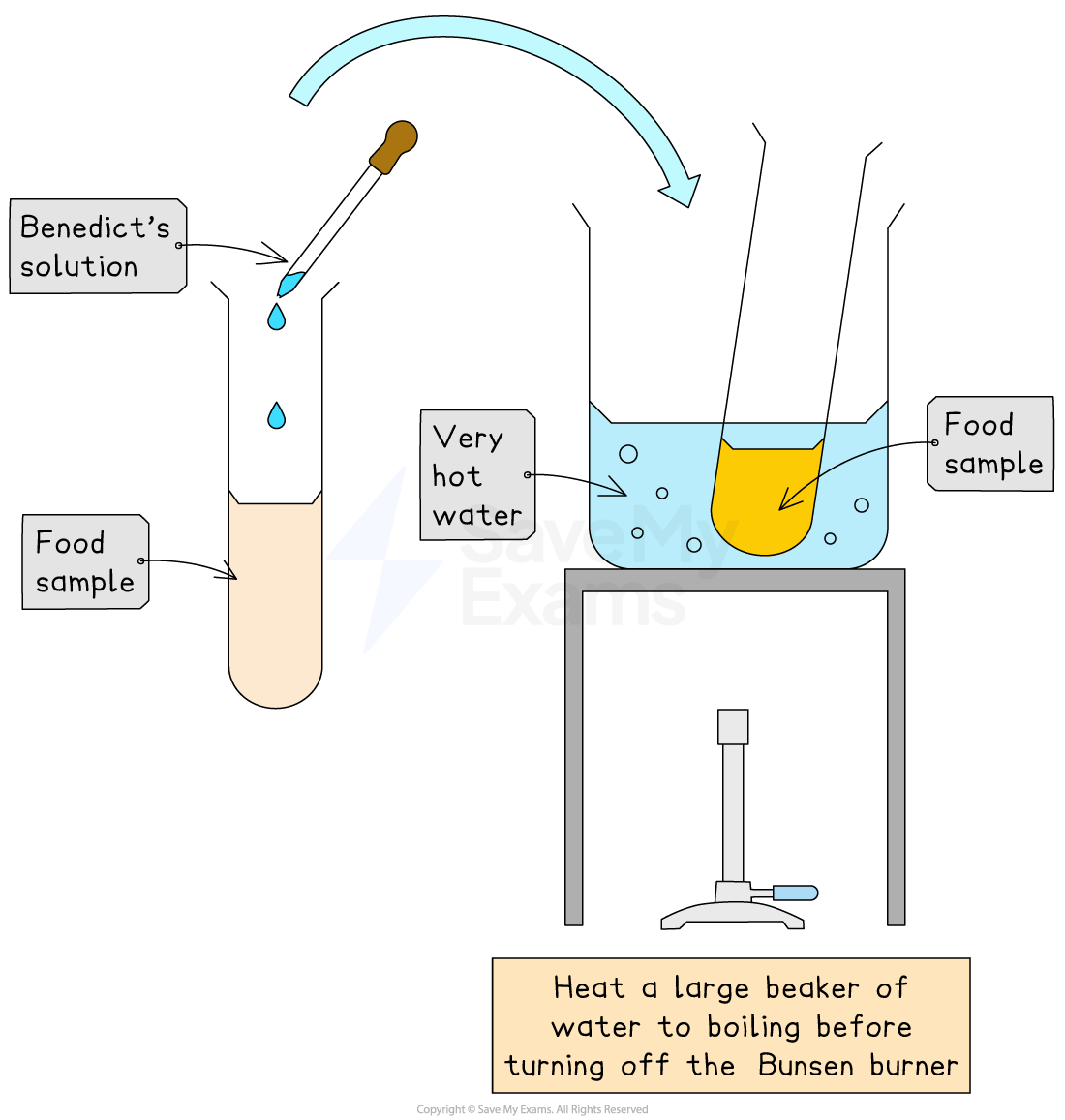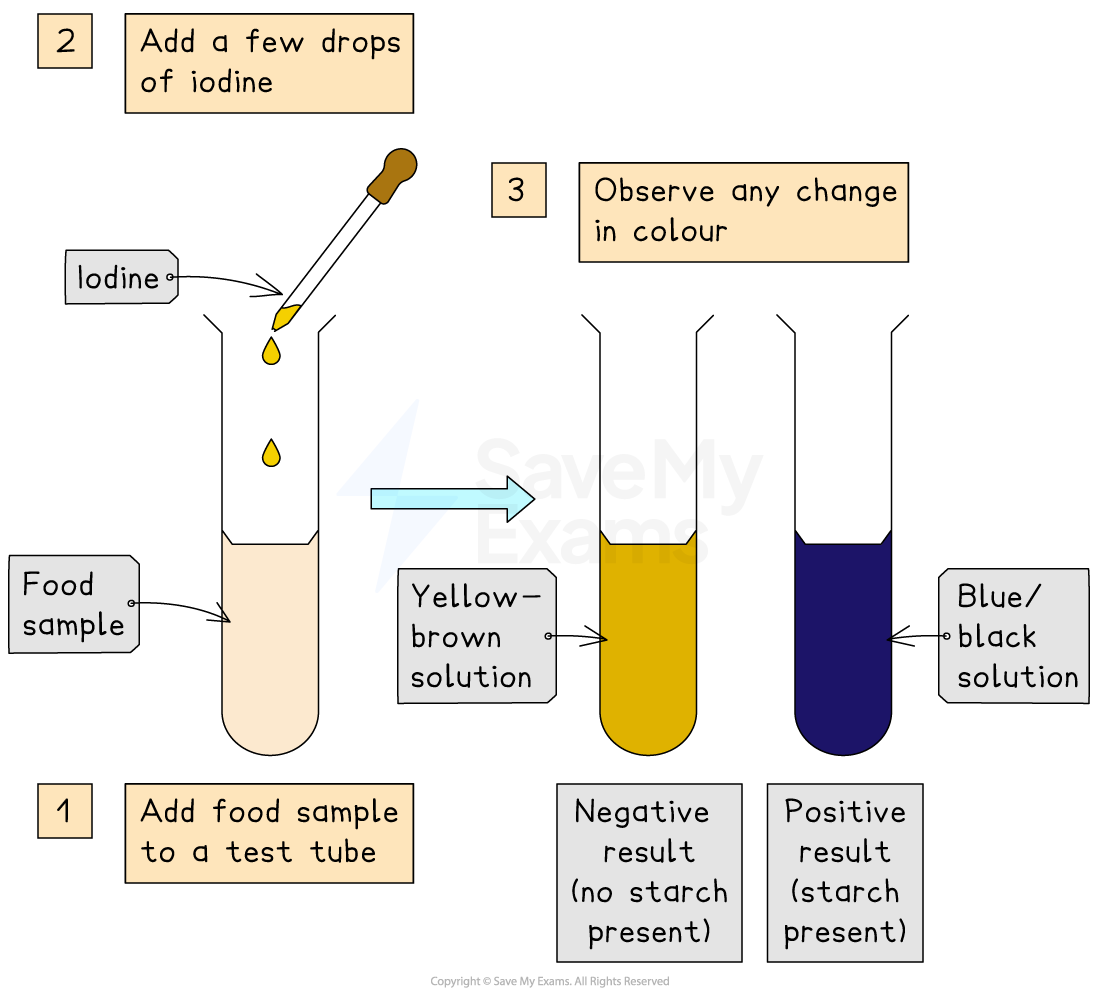Practical: Food Tests (Edexcel IGCSE Biology (Modular)): Revision Note
Exam code: 4XBI1
Did this video help you?
Practical: Food Tests
Food samples can be investigated for the presence of the following biological molecules:
Glucose
Starch
Protein
Fat
Preparing a sample
Before you can carry out any of the food tests described below, you may need to prepare a food sample first (especially for solid foods to be tested)
To prepare solid food for a food test:
Break up the food using a pestle and mortar
Transfer to a test tube and add distilled water
Mix the food with the water by stirring with a glass rod
Filter the mixture using a funnel and filter paper, collecting the solution
Proceed with the food tests
Powdered foods also work really well for this experiment:
Eg. powdered potato, milk powder, protein powder, powdered egg white and powdered glucose
There are several safety precautions to be aware of:
Wear eye protection
Wash any splashes from skin quickly
Do not taste any of the food substances
Take care to avoid spilling hot water
Test for glucose (a reducing sugar)
Add a few drops of Benedict's solution to the sample food solution
Benedict's solution is a light or bright blue colour
Heat in a beaker of very hot water for 5 minutes
Observe if there has been a colour change
A positive test will show a colour change from a light blue to orange / brick red depending on the concentration of glucose in the food sample
If there is a colour change, the darker the colour, the higher the concentration of glucose present
Safety precautions for this food test:
Wear safety goggles
Switch off the Bunsen burner after the water has been heated to almost boiling (or alternatively use a water bath)

Test for starch using iodine solution
Iodine solution is used to test for the presence or absence of starch in a food sample
Iodine solution is yellow-brown in colour
Add several drops of iodine solution to the food sample
A positive test for starch is a colour change from yellow-brown to blue-black

Protein food test
Add a few drops of Biuret solution to the food sample
Biuret solution is a blue colour
A positive test will show a colour change from blue to violet / lilac / purple

Test for lipids (fats)
Mix the food sample with 4cm3 of ethanol
Ethanol is a clear, colourless liquid
Place a bung firmly in the end of the test tube before shaking the tube vigorously
Allow time for the sample to settle
Strain the ethanol solution into another test tube
Add the ethanol solution to an equal volume of cold distilled water (4cm3)
A positive test will show a cloudy emulsion forming

The ethanol test for lipids
Food Test Results Table

Important hazards
Whilst carrying out this practical you should try to identify the main hazards and be thinking of ways to reduce harm
Biuret solution contains copper (II) sulfate which is dangerous particularly if it gets in the eyes, so always wear goggles
Iodine solution is also an irritant to the eyes
Sodium hydroxide in Biuret solution is corrosive, if any chemicals get onto your skin wash your hands immediately
Ethanol is highly flammable; keep it away from any Bunsen burner
The Bunsen burner itself is a hazard due to the open flame. It should be turned off when not in use
Worked Example
Food tests: analysis

Which food groups are present in the apple? Explain how you know.
The apple contained both starch and sugar as it tested positive for both the iodine test (orange → blue - black) and the Benedict's test (blue → orange).
The apple did not contain protein or lipid (fat) as the Biuret and emulsion tests were both negative.
Which foods contained:
Sugar: Apple, biscuit
Starch: Potato, apple
Lipid: Olive oil, egg yolk, biscuit
Protein: Egg yolk, tofu
Examiner Tips and Tricks
If you're asked to describe how to test for the presence of a biological molecule, make sure you state which solution you would use for the test and the colour change that you would expect to observe if the molecule was present.
Eg. if you're asked to describe how to test for glucose, you need to state that you would use Benedict's solution, add heat and that you would expect to see a red/orange/yellow colour change for a positive result.

Unlock more, it's free!
Did this page help you?